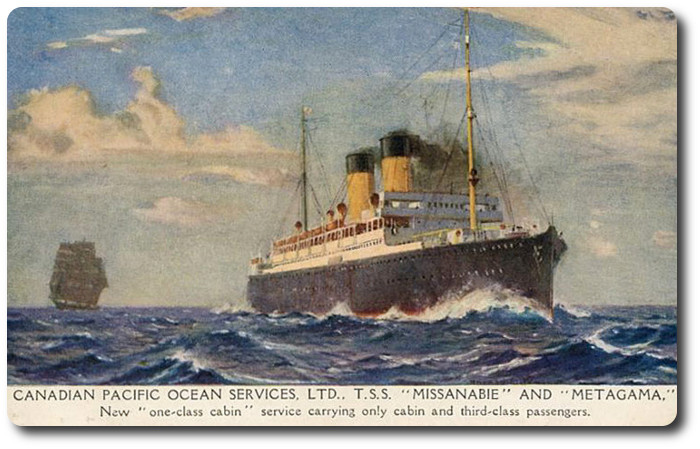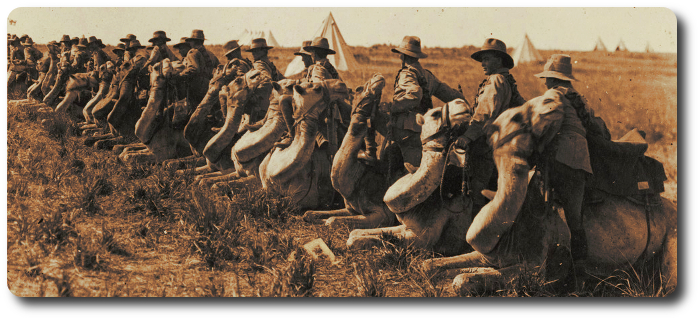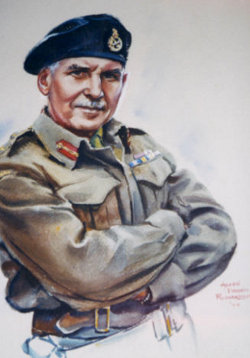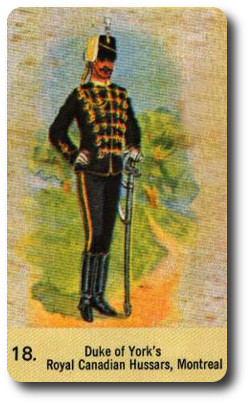Pleasing the Brigadier (1917)
Topic: Officers

Some of the Things that Please an Infantry Brigadier, By a Brigadier
Notes for Commanding Officers, Issued to Students at the Senior Officers' School, Aldershot, 1917 (5th Course)
The following points, which have been compiled by the Commandant, with the aid and assistance of Lieut.-Colonel J.F.R. Hope, D.S.O., K.R.R.C., may assist Officers who find themselves promoted to the Command of battalions in France. (N.B.—All these points, if observed by Commanding Officers, bring contentment of mind to the Officers, non-commissioned officers, and privates of their battalions.)
1. A Commanding Officer who has knowledge, and who knows how to impart his knowledge to those under him.
2. A Commanding Officer who salutes and turns out well himself, and insists on all his Officers doing the same.
3. A Commanding Officer who does not get rattled directly the Brigadier or Divisional Commander or any other General hoves into sight.
4. A Commanding Officer who insists on a good Headquarters mess and good Company messes for every one of his Companies.
5. A Commanding Officer who trains his Battalion sensibly and in moderation.
6. A Commanding Officer who does not permit his men to be pulled out of their beds before 7 a.m. either in summer or winter.
7. A Commanding Officer who does not allow parades of any kind on an empty stomach before breakfast.
8. A Commanding Officer with a cheerful attitude.
9. A Commanding Officer who can answer any reasonable question put to him regarding his own Battalion.
10. A Commanding Officer who insists on keeping up a good corps of drummers, buglers, or pipers.
11. A Commanding Officer in whose Battalion crime is practically non-existent, and yet in which the Officers and men work hard and fight well.
12. A Commanding Officer who is always thinking of, and encouraging day and night, esprit de corps in his Battalion.
13. A Commanding Officer who reads his orders and correspondence with care, and deals with both in a sensible and systematic manner. Also, one who, when called upon to give his opinion on some point, keeps to the matter at hand, and does not break off into some extraneous subject.
14. A Commanding Officer who insists on his Adjutant getting away from his office and being a fighting soldiers rather than an officer's clerk, which a good many Adjutants prefer and think it is their duty to be.
15. A Commanding Officer who will not permit his Officers to wear freak garments (e.g., snow-white gloves, collars, ties, and breeches, pudding caps, etc.) or to grow Charlie Chaplin moustaches.
16. A Commanding Officer who realises the importance of keeping for ever in front of his men the cause for which they are fighting.
17. A Commanding Officer who is human and a man of the world, and who therefore sympathises with his Officers and men in their desire to enjoy whatever the opportunity permits (e.g., when the Battalion is billeted near towns or other places of interest, one who allows them to enjoy the amenities of life in those towns, provided the necessary leave is forthcoming).
18. A Commanding Officer who says what he thinks in a tactful, yet determined, manner, and not what he thinks will please the Brigadier.

19. A Commanding Officer who, in a tactful manner, will bring to the notice of the Brigadier any order issued from the Brigade, which may be unworkable and so unsound.
20. A Commanding Officer who puts his battalion into action only after a thorough reconnaissance of the ground, and after pointing out to his Company officers on the ground exactly what he wishes done.
21. A Commanding Officer who in action really commands his Battalion, and keeps the Brigadier accurately informed of the situation.
22. A Commanding Officer whose men are playing games in the afternoon, or otherwise enjoying themselves and keeping fit.
23. A Commanding Officer who plays himself and can lead his Battalion in games as well as in action.
24. A Commanding Officer who knows his Officers and non-commissioned officers intimately, and who can address many of the private soldiers by name.
25. A Commanding Officer who has the interests of his Officers and men at heart when alive, and when dead humours them by decent burial, and who thinks of their relatives.
26. A Commanding Officer whose Officers, non-commissioned officers and men know the history of their regiment, and who are bent on making history for it.
27. A Commanding Officer who knows when a gallant action has been performed, and sees that the right man is rewarded.
28. A Commanding Officer who is respected and trusted by every member of his Battalion.
29. A Commanding Officer whose battalion is clean, smart at drill, well fed, and on the march does not struggle. Whose Battalion can move off as a compact unit at very short notice, and for any purpose, cheerfully and in good heart.
30. A Commanding Officer who has a good canteen, wet and dry, under all circumstances possible, a recreation-room properly equipped, and always a separate room or mess for his Warrant Officers and non-commissioned officers.
31. A Commanding Officer who, if in the trenches, knows his line from end to end, not only as regards the actual trenches, but is also thoroughly acquainted with the actual ground in and in front of his sector.
32. A Commanding Officer whose Officers, non-commissioned officers and specialists are the best in the Brigade—thoroughly trained and thoroughly reliable.
33. A Commanding Officer who never forgets to praise where praise is due, but who allows no slackness or dereliction of duty of any kind whatever.
34. A Commanding Officer who is not content with telling his non-commissioned officers that they are the backbone of the Army, but who, by taking an active part in their training, assists them to improve their knowledge, and who, by insisting on them living properly and under conditions in keeping with their rank and position, enables them to preserve their status in the eyes of the men.
35. A Commanding Officer who has knowledge and because of this knowledge can handle his Battalion at all times in action in such a manner as to inspire his men with the utmost confidence.
36. A Commanding Officer who personally sets every single Officer, non-commissioned officer and private in his Battalion the finest example in everything he calls on them to undertake.

Posted by regimentalrogue
at 12:01 AM EST

















 An Eastern Canada Army Camp. July 7.—(CP)—
An Eastern Canada Army Camp. July 7.—(CP)—



 "Military News," The Montreal Gazette, 4 December 1897
"Military News," The Montreal Gazette, 4 December 1897



 The Province of Ontario now boasts of a Cavalry school. The Royal Canadian Dragoons, as they are called, left Quebec on Monday morning, at eight o'clock. They came by C.P.R. special, and were expected at the Queen's wharf here at ten o'clock yesterday morning, but it was half an hour later before the train pulled in. Lieut.-Col. Otter, D.A.G., and Capt Macdougall, with the band of No. 2 Co., C.R.I. were on hand to welcome the newcomers. Whilst the horses and baggage were being disembarks the band played several quick-steps. Among those present to witness the arrival was |Lieut.-Col. F.C. Denison, M.P. When everything was in readiness the troops started on the march to its new quarters, preceded by the band of No. 2 Co., C.R.I., which played the march commonly known as "Knock 'Em in the Old Kent Road." The infantry men in the barracks formed up and cheered the troopers as they came in. It is altogether likely the troop will be doubled in strength shortly, and the Cavalry school will be in full blast in a few days. The number of applications for admission to the school from officers of cavalry corps in the surrounding country is very large. Five officers are attached to the school, the troop being in command of Lieut.-Col. Turnbull. The troopers are quartered in the old stone barracks on the western side of the quadrangle. The officers will belong to the officers' mess of No. 2 Co. The Government will at once take into consideration the advisability of increasing the barracks accommodation for the officers. The accommodation for the infantry officers attending the school was rather limited, and with the increase in the permanent staff almost all the available room will be taken up. The two married cavalry officers will have to find quarters outside the officers' building. The troopers wear dark blue uniform with yellow facings, and they look very smart. Many of the men have seen active service. Captain F.T. Lessard is adjutant, Mr. W. Forester 1st lieutenant, and Capt. Hall, of "B" Battery, is attached as veterinary surgeon, and rumour has it that he will shortly be transferred to the cavalry. The trip from Montreal was very agreeable.
The Province of Ontario now boasts of a Cavalry school. The Royal Canadian Dragoons, as they are called, left Quebec on Monday morning, at eight o'clock. They came by C.P.R. special, and were expected at the Queen's wharf here at ten o'clock yesterday morning, but it was half an hour later before the train pulled in. Lieut.-Col. Otter, D.A.G., and Capt Macdougall, with the band of No. 2 Co., C.R.I. were on hand to welcome the newcomers. Whilst the horses and baggage were being disembarks the band played several quick-steps. Among those present to witness the arrival was |Lieut.-Col. F.C. Denison, M.P. When everything was in readiness the troops started on the march to its new quarters, preceded by the band of No. 2 Co., C.R.I., which played the march commonly known as "Knock 'Em in the Old Kent Road." The infantry men in the barracks formed up and cheered the troopers as they came in. It is altogether likely the troop will be doubled in strength shortly, and the Cavalry school will be in full blast in a few days. The number of applications for admission to the school from officers of cavalry corps in the surrounding country is very large. Five officers are attached to the school, the troop being in command of Lieut.-Col. Turnbull. The troopers are quartered in the old stone barracks on the western side of the quadrangle. The officers will belong to the officers' mess of No. 2 Co. The Government will at once take into consideration the advisability of increasing the barracks accommodation for the officers. The accommodation for the infantry officers attending the school was rather limited, and with the increase in the permanent staff almost all the available room will be taken up. The two married cavalry officers will have to find quarters outside the officers' building. The troopers wear dark blue uniform with yellow facings, and they look very smart. Many of the men have seen active service. Captain F.T. Lessard is adjutant, Mr. W. Forester 1st lieutenant, and Capt. Hall, of "B" Battery, is attached as veterinary surgeon, and rumour has it that he will shortly be transferred to the cavalry. The trip from Montreal was very agreeable.


 Stratford, December 7.—Fifteen years after the war which was to end wars, 21 members of the Stratford branch of the Canadian Legion tonight surrendered their victory medals with a request that they be sent to the Finance Ministers of 21 nations—allied and enemy alike—to be melted down into metal "and swallowed with all other rewards of armed conflict in payment of the war costs of the world."
Stratford, December 7.—Fifteen years after the war which was to end wars, 21 members of the Stratford branch of the Canadian Legion tonight surrendered their victory medals with a request that they be sent to the Finance Ministers of 21 nations—allied and enemy alike—to be melted down into metal "and swallowed with all other rewards of armed conflict in payment of the war costs of the world."